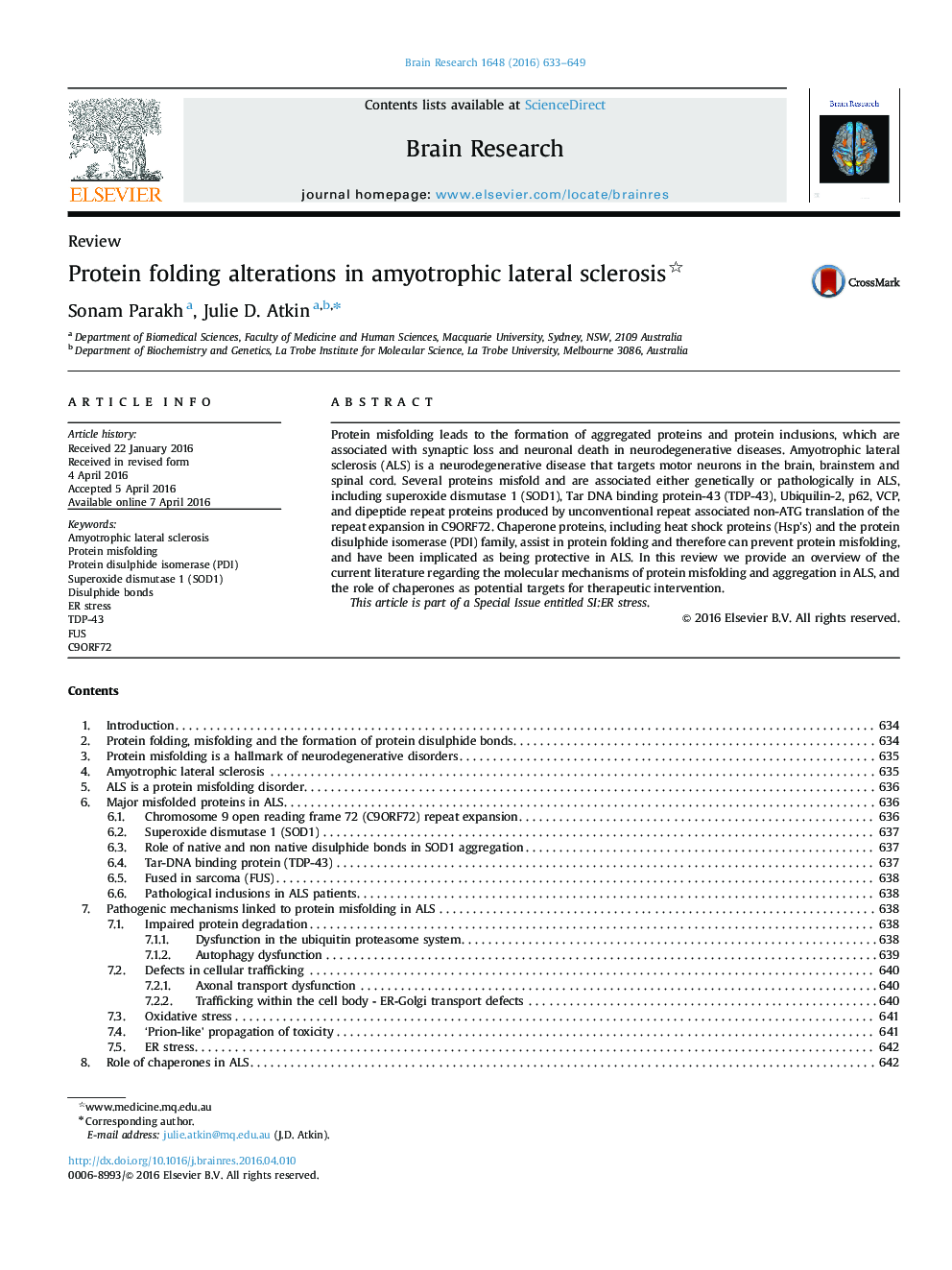| Article ID | Journal | Published Year | Pages | File Type |
|---|---|---|---|---|
| 6262294 | Brain Research | 2016 | 17 Pages |
â¢Protein misfolding as a cause and/or consequence of ALS pathology is discussed.â¢Mutant C9ORF72, SOD1, TDP-43, FUS induce proteostasis dysfunction.â¢Dual role of the protein disulphide isomerase (PDI) family of chaperones in ALS.â¢Chaperones are potential therapeutics against misfolded proteins in the pathogenesis of ALS.
Protein misfolding leads to the formation of aggregated proteins and protein inclusions, which are associated with synaptic loss and neuronal death in neurodegenerative diseases. Amyotrophic lateral sclerosis (ALS) is a neurodegenerative disease that targets motor neurons in the brain, brainstem and spinal cord. Several proteins misfold and are associated either genetically or pathologically in ALS, including superoxide dismutase 1 (SOD1), Tar DNA binding protein-43 (TDP-43), Ubiquilin-2, p62, VCP, and dipeptide repeat proteins produced by unconventional repeat associated non-ATG translation of the repeat expansion in C9ORF72. Chaperone proteins, including heat shock proteins (Hsp׳s) and the protein disulphide isomerase (PDI) family, assist in protein folding and therefore can prevent protein misfolding, and have been implicated as being protective in ALS. In this review we provide an overview of the current literature regarding the molecular mechanisms of protein misfolding and aggregation in ALS, and the role of chaperones as potential targets for therapeutic intervention.This article is part of a Special Issue entitled SI:ER stress.
